-
Earth Science Journal!
#7
Title: Latitude and Longitude
How are lines of Latitude and Longitude measured?
Let us imagine...
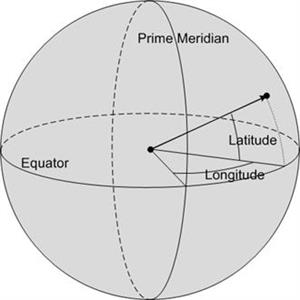
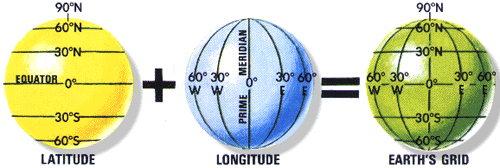 Please write down these notes in your journal.
Please write down these notes in your journal.
Latitude: degrees North or South of the Equator (Parallels)Equator = 0° LatitudeNorth Pole = 90° North latitudeSouth Pole = 90° South latitudeLatitude is like onion rings!Rings get smaller as you move toward the poles. Longitude: Measured in degrees East or West of the Prime MeridianPrime Meridian = 0° LongitudeInternational Date Line = 180° Longitude(hee, hee, 1-800-date)
Longitude: Measured in degrees East or West of the Prime MeridianPrime Meridian = 0° LongitudeInternational Date Line = 180° Longitude(hee, hee, 1-800-date) "What is the International Date Line?
"What is the International Date Line?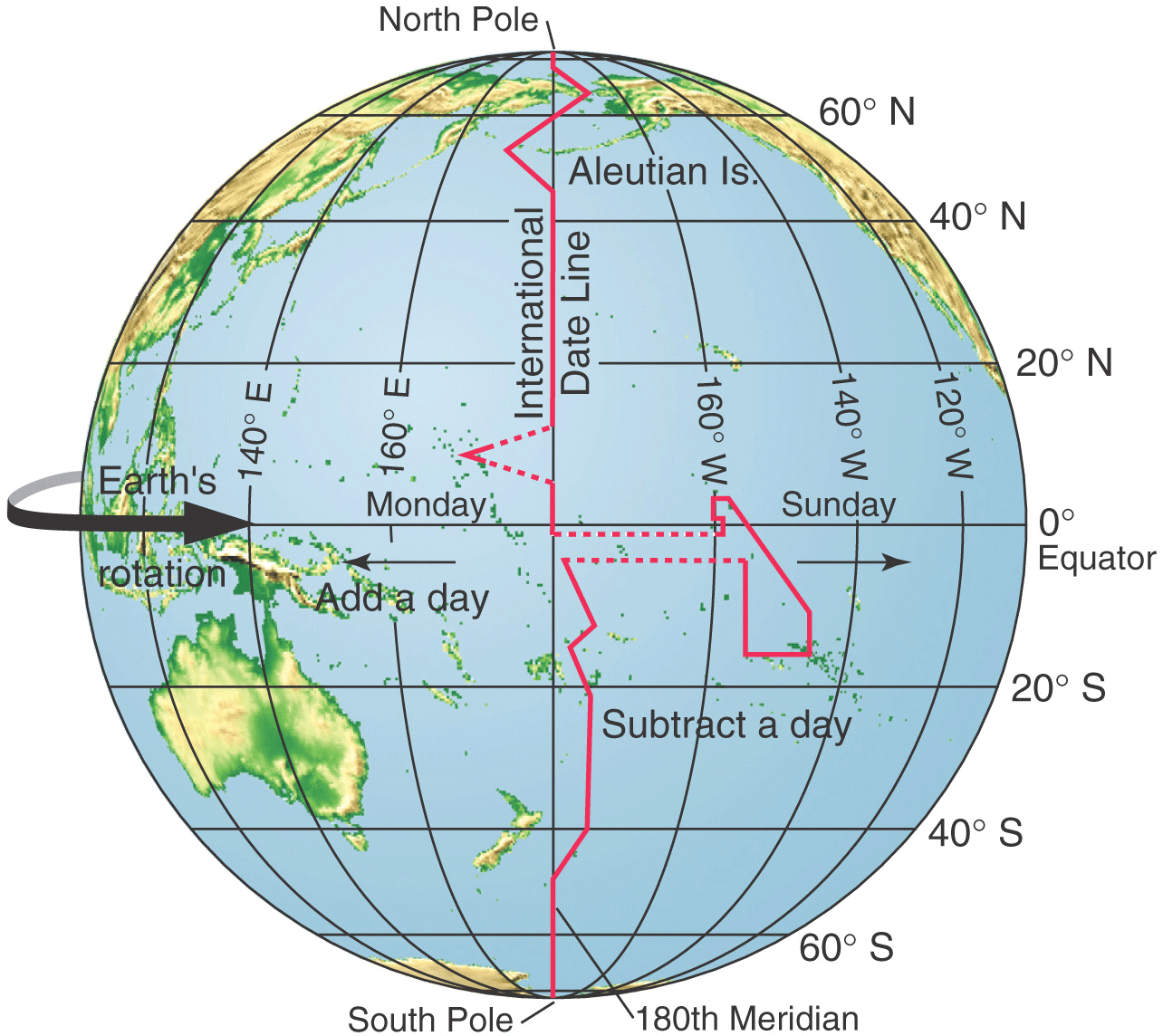 Longitude is like orange slices.
Longitude is like orange slices.
Lines of Longitude all meet at the Poles. Tape this image into your journal.
Tape this image into your journal.
Label the Tropics off to the side of the image.
Find the latitude and longitude of these points.A (23.5ºN, 60º W)
B (40ºN, 30ºW)
C (60ºS, 30ºE)
D (10ºS, 30ºE)
E (20ºN, 60ºE)
If it is 12:00 noon on the Prime Meridian, what is the local time for those points?A 8:00 AM B 10:00 AM C 2:00 PM D 2:00 PM E 4:00 PMRemember West = Earlier (15°/hour)
Problems with putting the round world on a flat mapImagine carefully peeling an orange and trying to flatten the orange peal out to make a nice flat surface. Do you think you could do this without ripping the orange peel? This is what cartographers are trying to do when they create a world map. Check out the interesting methods they have used and the many different types of world maps that there have been.
 Airline flight paths are great circle routes!
Airline flight paths are great circle routes!
All flat maps of the Earth are distorted!
Please find the ocean currents page in your reference tables.
You will need a ruler.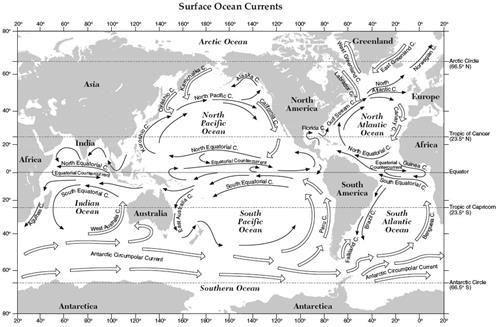
Draw the Prime Meridian and the International Date Line (disregarding political boundaries)
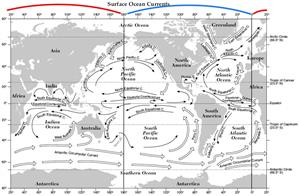
Label the Northern and Southern hemispheres.
Also, the Eastern and Western hemispheres.
The best way to do this is to put yourself on the zero lines!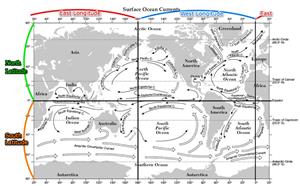
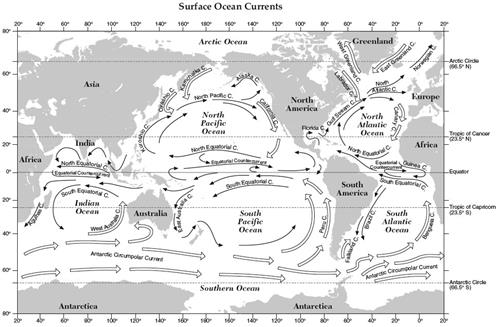
Find the Ocean Current at (40º N, 130º W)
1. Current name? California Current
2. Is it a warm or cold ocean current? Cold Current

Find the Ocean Current at (30º S, 40º W)
3. Current name? Brazil Current
4. Is it a warm or cold ocean current? Warm Current

Find the Ocean Current at (23.5º S, 35º E)
5. Current name? Agulhas Current
6. Is it a warm or cold ocean current? Warm Current
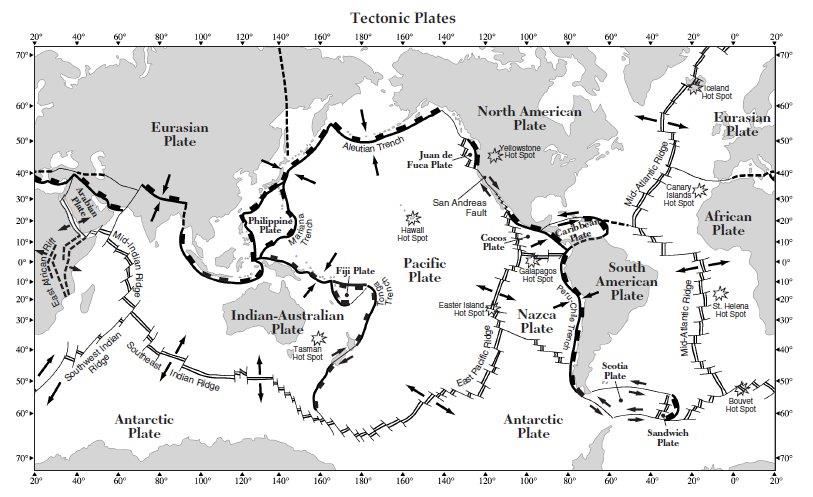
7. What tectonic feature is located at (37º S, 160º E)?
Tasman Hotspot
Latitude and Longitude from the North Pole
Label the Equator and the North Pole.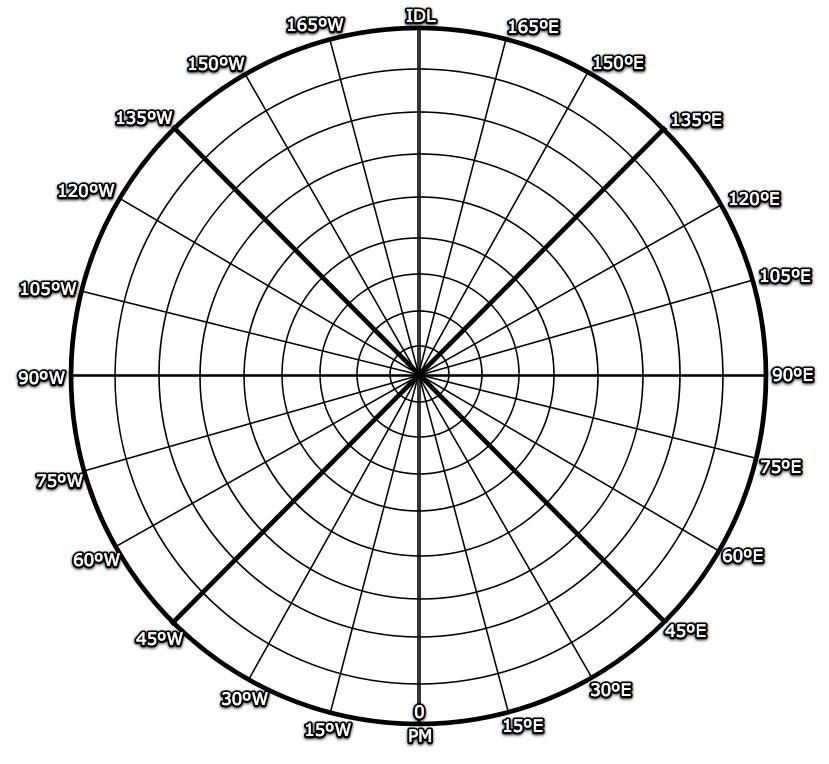
Locate and plot these points.
A = (35°N, 165°W), B = (5°N, 70°E), C = (45°N, 75°W)
D = (20°N, 25°W), E = (20°N, 120°E)Check your answers below.
Write down and answer these questions in your journal.
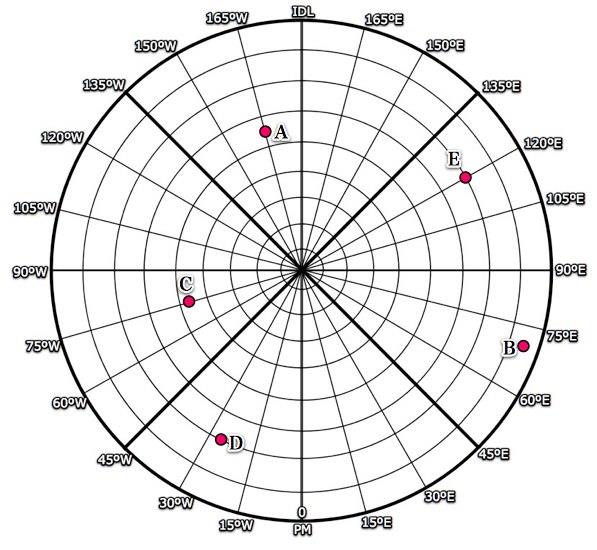
8. Which point is closest to Wilson, New York?
9. If it is 7:00 AM at point C, what time is it at point A?
10. At what two locations would Polaris be the same height in the night sky?
8. Which point is closest to Wilson, New York? Point C
9. If it is 7:00 AM at point C, what time is it at point A? It would be 1:00 AM
10. At what two locations would Polaris be the same height in the night sky? Points E and D because they are on the same line of latitude.
ReflectionHow are lines of latitude and longitude different? How are they similar?How do we find our location on Earth by using the sun and stars?Bonus!Cut out and construct your Star Clock and Astrolabe as described below.
Use your Astrolabe to find the altitude of Polaris to the nearest degree above the horizon, then use your star clock to locate the position of Polaris as described.Star Clock: Our daytime concept of time is based on the motion and
position of the Sun. But did you realize you could use the stars to
tell time at night? Long before the invention of clocks and watches,
Skywatchers knew that the motion of the stars marked the passage of
time during the night. As Earth turns on its axis, the stars appear to
rise in the east and set in the west, like the sun and moon.
Looking up in the northern sky, however, the stars do not rise or set
— instead, they seem to turn counterclockwise around Polaris slowly,
the North Star. Your Star Clock uses this nightly pinwheel star motion
around Polaris using the Big Dipper. For reference to you to
find the time during the night.

